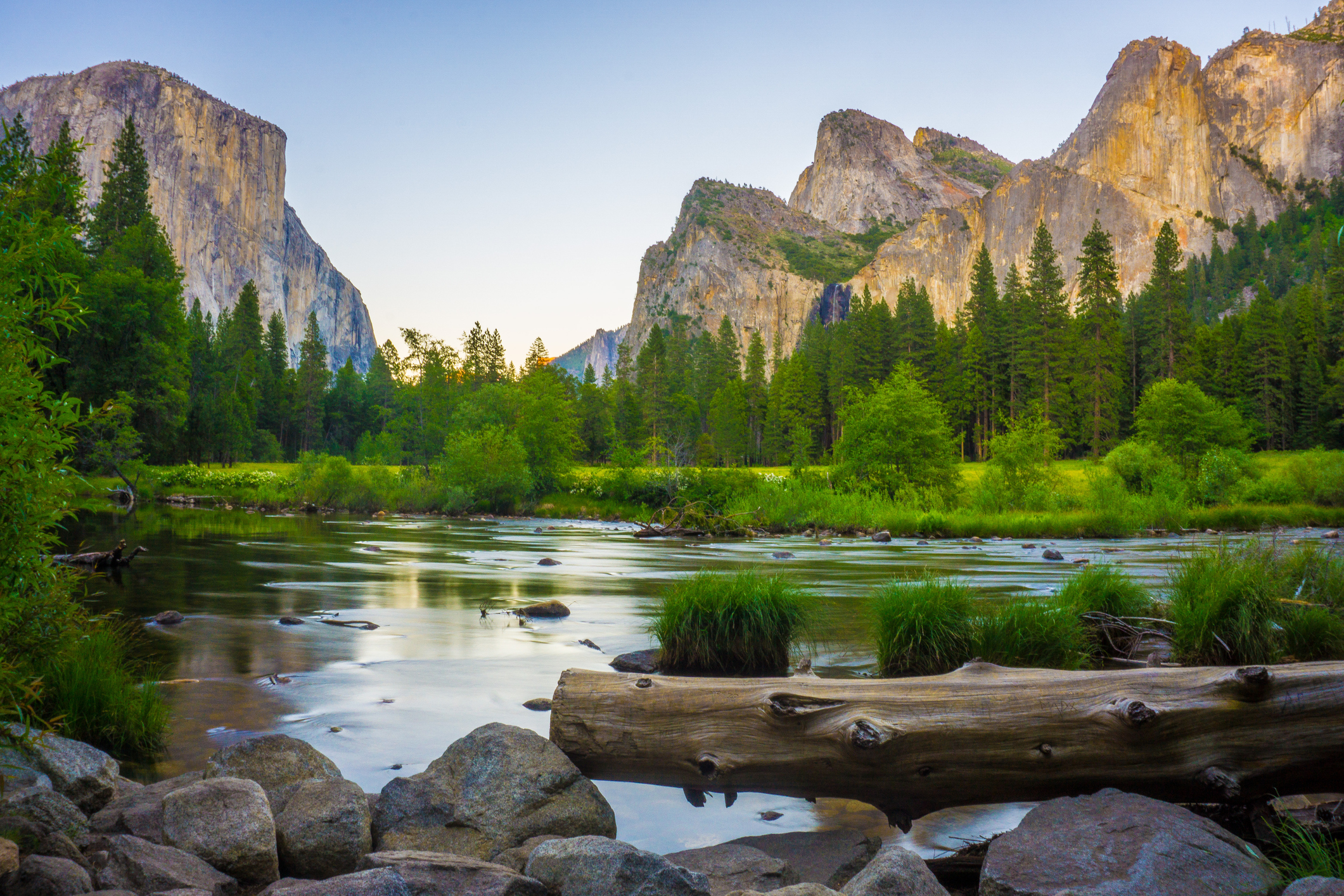
In my home country of Norway, we have incredible landscapes and parks named to impress. We have the Home of the Giants, a mountain range overrun with ancient glaciers and reindeer.
There is the Troll Wall, a 3,600-foot sheer cliff face. Then there is the troll’s tongue, Trolltunga, a flat slab of rock that juts out like a plank on a pirate ship, 2,300 feet over a valley. Those too lazy to walk back to the parking lot at either of these attractions often bring a parachute for an express descent.
Growing up around these mythical landscapes, I often wondered how the famous Yellowstone National Park could compare. I had the chance to find out this summer when I visited with my family for the first time. I was, predictably, humbled. Even to a landscape-spoiled Norwegian, the waterfalls, the geysers, the vistas and the wildlife were beyond stunning.
I had no trouble seeing why Yellowstone was the first national park in the world.
To me, that idea—to set aside large areas of landscape for preservation—was a stroke of genius. It was a great moment in human history.
As great ideas do, it resonated. Thousands of national parks representing millions of square kilometres of protected area have been established in almost 100 countries.
Afghans have a series of deep blue lakes that became Band-e-Amir National Park, the country’s first, and brought a common pride to a nation fractured by war. On the Zambia-Zimbabwe border, two countries are working together to protect one of Earth’s great marvels. Zambia’s Mosi-oa-Tunya National Park and Zimbabwe’s Victoria Falls National Park share the world’s largest waterfall.
Conservation is obviously not a uniquely Norwegian or American sentiment. We have a human instinct to preserve nature. The natural world tugs at something primal in our hearts, and we want to keep it that way.
We have new data now that shows we are keeping it that way, more and more.
The biennial Protected Planet assessment, being released today by U.N. Environment and the International Union for Conservation of Nature, shows that 14.7% of land and 10% of territorial waters on the planet are now under some form of protection.
On land, this falls just shy of an international goal to protect 17% of land by 2020. On water, we’ve hit our goal of 10%. And this does not count President Obama’s recent admirable and historic designation of the enormous marine reserve around Hawaii or protected area in Maine.
But the numbers only tell half the story.
Yes, we’ve made huge gains in the number and size of protected areas in the last decade. Unfortunately, as protected areas grow they are not shielding critical habitats and species.
Less than 20% of the world’s key biodiversity areas are completely covered by protected areas, and fewer than half of threatened species have their range sufficiently covered. Enormous amounts of wildlife, plants and animals both, are undefended by park rangers or the law.
And less than 20% of countries have met their own commitments to assess how well they are managing protected areas. This means we don’t even know if the vast majority of our conservation efforts are adequate.
The gains made in the quantity of protected areas have to be matched by improvements in their quality.
Of course, it’s not feasible to designate everywhere a national park or marine reserve. But protected areas cannot be limited to famous expanses of wilderness or features with fairy tale names.
Nature on a modest scale—small habitats, individual species—need protection as well. These areas are more than feel-good spaces. They are to ensure that large-scale ecosystems continue to function.
In celebrating the 100 years of the National Park Service this year, President Obama said that “protecting our sacred spaces is even more important” over the next century.
He is spot on. But nature’s humblest dwellings and specimens are every bit as worthy of reverence as the great national parks.
Right now we are too focused on protecting spaces, not what is sacred.
More Must-Reads from TIME
- Why Biden Dropped Out
- Ukraine’s Plan to Survive Trump
- The Rise of a New Kind of Parenting Guru
- The Chaos and Commotion of the RNC in Photos
- Why We All Have a Stake in Twisters’ Success
- 8 Eating Habits That Actually Improve Your Sleep
- Welcome to the Noah Lyles Olympics
- Get Our Paris Olympics Newsletter in Your Inbox
Contact us at letters@time.com